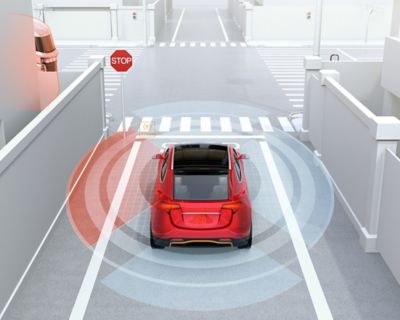-
United States -
United Kingdom -
India -
France -
Deutschland -
Italia -
日本 -
대한민국 -
中国 -
台灣
-
-
產品系列
查看所有產品Ansys致力於為當今的學生打下成功的基礎,通過向學生提供免費的模擬工程軟體。
-
Ansys Blog
March 4, 2019
Award-Winning Solution for Developing Autonomous Driving
When fully autonomous driving becomes a reality, it’ll disrupt numerous industries with its safety and quality-of-life improvements.
Until then, engineers need to put in a lot of work before cars can drive with all passengers relaxing in the backseat.
The road is an unpredictable place. Therefore, autonomous vehicles will need to safely traverse an immeasurable number of scenarios.
A lot of design work needs to
go into autonomous driving
until we can take our hands
off the wheel
To that end, the logic, sensors and embedded software that will make fully autonomous driving possible need to be tested on billions of miles of road before they can be considered safe and accurate. Even then, it’s hard to ensure that the autonomous systems will be tested over a statistically significant number of edge scenarios.
With the use of simulation tools, engineers can speed up the development of autonomous vehicles and ensure that all of these edge scenarios are appropriately tested.
According to a best-in-show award from Embedded Computing Design at Embedded World, Ansys’ autonomous vehicle solution is the perfect choice to simulate and develop fully autonomous systems. With this software suite, engineers are able to perform:
- Closed-loop simulations (Ansys VRXPERIENCE).
- Hardware-in-the-loop testing (Ansys SCADE).
- Functional safety analysis (Ansys medini analyze).
- Embedded software development (SCADE).
- Embedded software deployment (SCADE).
The Different Levels of Autonomous Driving
An autonomous vehicle’s level of independence determines the amount of simulation that is required to ensure its safety.
The National Highway Traffic Safety Administration has recognized six levels of autonomous driving. In summary, they are:
- Level 0: The car has no autonomy.
- Level 1: The car has advanced driver- assistance systems (ADAS) — like cruise control. However, the driver is in charge and only one ADAS can operate at a time.
There are six levels of
autonomous driving from no
autonomy to fully autonomous
- Level 2: The car has multiple ADAS that can operate simultaneously.
- Level 3: The car can operate autonomously under certain traffic and environmental conditions. However, the driver must still be present so they can intervene.
- Level 4: The car is autonomous in most situations; the driver has the option to take over, but this is generally not needed.
- Level 5: The car is fully autonomous in all conditions.
Currently it’s common to see vehicles on the road driving at Level 2. However, vehicles driving at Level 3 are starting to break into the market.
The time it took to develop Level 1 autonomous driving is considerably longer than the time it took to jump from Level 1 to Level 2. However, the higher levels will be more challenging to reach and will require much more testing.
The Ansys Solution for Autonomous Vehicle Development
As previously mentioned, it isn’t realistic to drive billions of miles to test autonomous driving or encounter every possible scenario on the road.
As a result, automakers are using Ansys’ solution for autonomous vehicle development to reduce the cost and time to market.
For instance, the autonomous vehicle solution can:
- Perform closed-loop safety assessments in a virtual world.
- Test sensors, like lidar, radar and cameras, at the component level in a virtual world.
- Develop battery management systems (BMS) to monitor and control rechargeable batteries.
To see a demo of some of these features, watch the video below:
Demo video of ANSYS’s solutions for autonomous vehicle development
At the end of the day, engineers will need to put in a considerable amount of development time just to produce a prototype autonomous vehicle. They will need to ensure the car’s sensors, artificial intelligence and embedded software are all up to ISO 26262 safety standards.
Ansys’ award-winning solution for autonomous vehicles will help engineers adhere to these standards and ensure that these systems are on the road in the nearer future.
To learn more, read the Ansys solution page for: Autonomous vehicles and ADAS.












